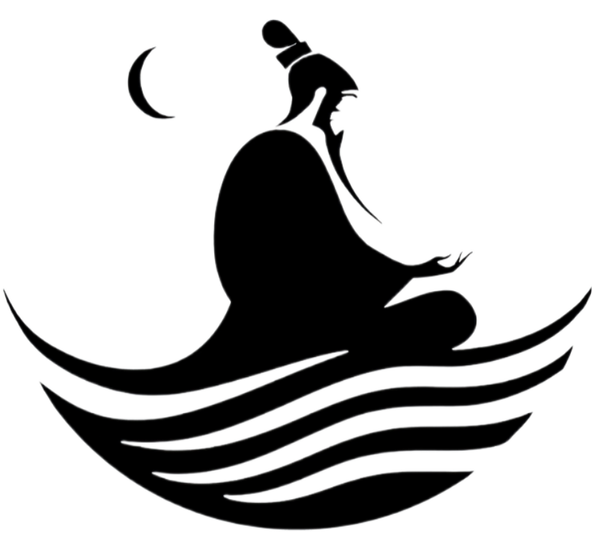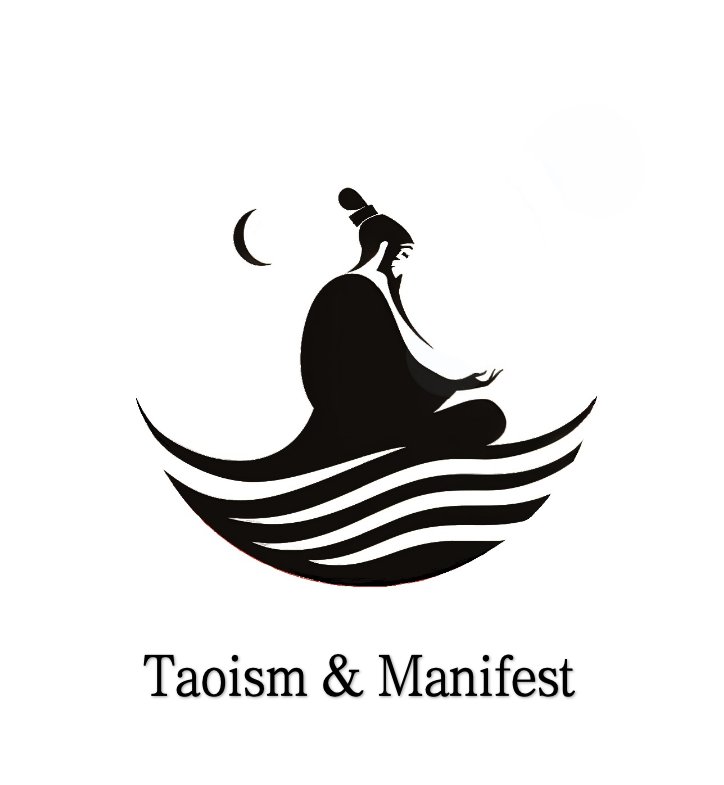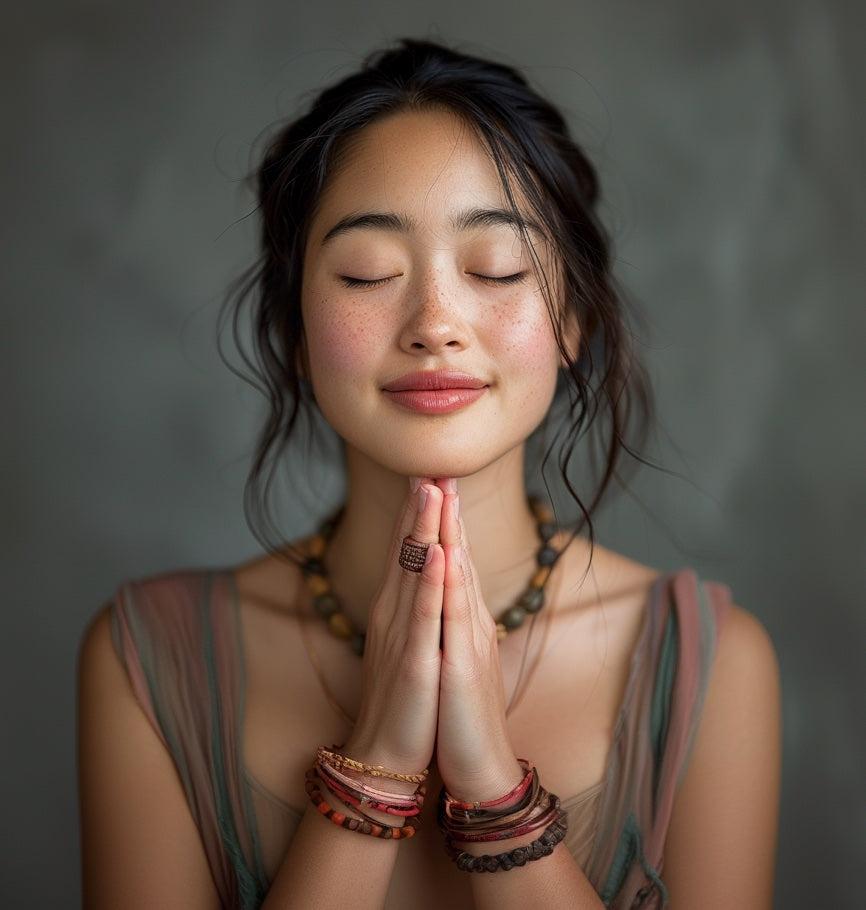
Buddhism and Taoism both help people find peace, but they do it in different ways. Buddhism teaches the Four Noble Truths and the Eightfold Path. These give steps to deal with suffering and grow as a person. Taoism values Wu Wei, ziran, and softness. It tells people to be gentle and natural. Many people say Buddhism and Taoism help with stress and daily problems. Some people like Buddhist habits, while others like the Taoist way. You can try both for a week to see which one you like.
Key Takeaways
Buddhism gives clear steps like the Four Noble Truths and Eightfold Path. These steps help people understand and stop suffering.
Taoism teaches people to live naturally with Wu Wei which means effortless action. It also teaches ziran, which means being true to yourself. These ideas help people find peace and balance.
Both Buddhism and Taoism value mindfulness, meditation, and harmony. But they have different ways to handle life and suffering.
Buddhism wants people to end craving and focus less on themselves to reach enlightenment. Taoism wants people to accept things and go with the flow of nature.
Trying both Buddhist habits and Taoist ways can help you find what makes you feel calm and balanced each day.
Origins
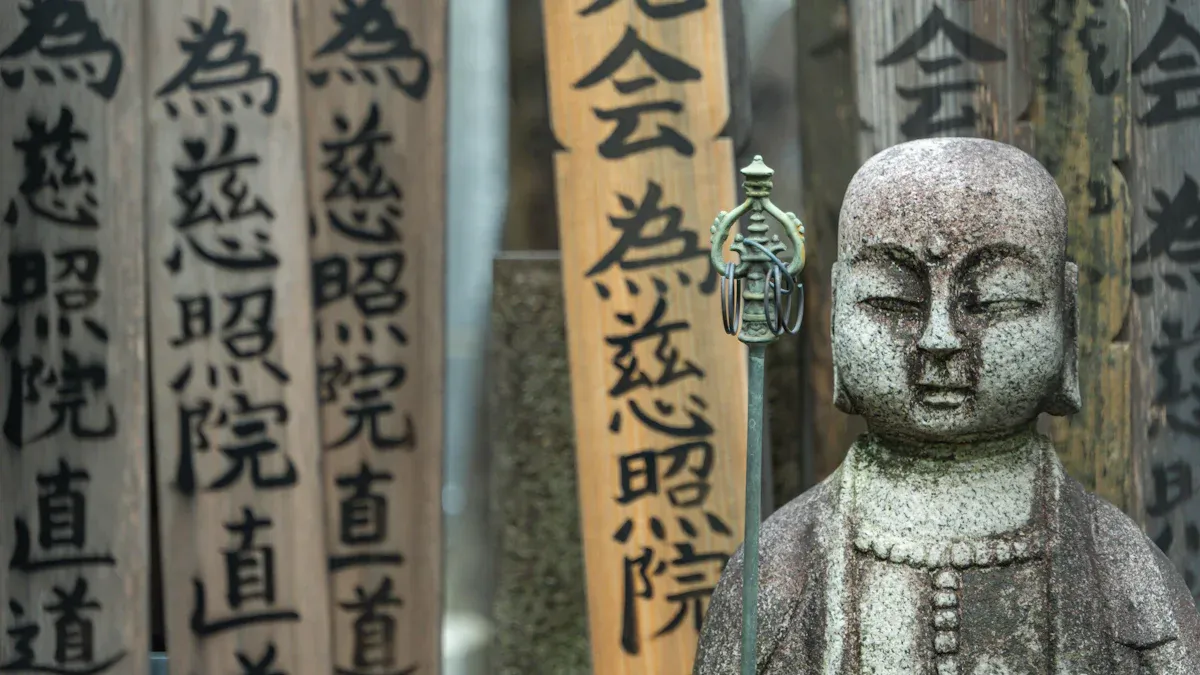
Buddhism
Buddhism started in India more than 2,500 years ago. The main person was the Buddha, whose real name was Siddhārtha Gautama. He lived in a place called the Shakya Republic, now in Nepal. The Buddha was a prince, but he left his rich life. He wanted to find out why people suffer. He tried many ways, like being very strict with himself. Later, he chose a middle path instead. After meditating under a Bodhi tree, he became enlightened. He spent about 45 years teaching others in the Gangetic Plains. The Buddha showed people how to stop suffering and find peace. His followers made a group called the sangha, with monks and nuns. Old books like the Pāli canon wrote down his lessons and stories. These books and old writings help us learn how Buddhism grew. Archaeologists found old writings and objects that show Buddhism spread from India to Asia. The Buddha’s teachings led to many schools, like Theravāda, Mahāyāna, and Vajrayāna. Each school had new ideas, but all followed the Buddha’s way.
Taoism
Taoism began in China a long time ago. Many people think Lao Tzu started this religion. Lao Tzu wrote the Tao Te Ching, a book about the Tao, or the Way. The Tao Te Ching teaches people to live in harmony with nature. Old copies of this book were found in places like the Mawangdui tombs. Taoism grew during the Han dynasty and became a real religion. People started doing rituals, learning alchemy, and looking for spiritual change. Taoism also has stories about Lao Tzu and other wise people. Over time, Taoism made many schools and traditions. Some schools focused on meditation. Others did ceremonies to connect with the divine. Taoism is a big part of Chinese culture. Its ideas about nature and balance are still important today.
Core Concepts
Four Noble Truths
Buddhism begins with the Four Noble Truths. The buddha taught these truths to help people understand life and suffering. First, he explained that life has suffering, called dukkha. This suffering includes pain, loss, and the feeling that nothing lasts forever. Second, the buddha said that suffering comes from craving and wanting things to be different. Third, he shared that people can end suffering. Fourth, the buddha gave a path to stop suffering. This path leads to peace and happiness. Many people in buddhism use these truths as a guide for daily life. They help people see why they feel unhappy and show a way to find calm. The Four Noble Truths encourage people to look at their own minds and actions. They help people move closer to nirvana and enlightenment.
Eightfold Path
The noble eightfold path is the next step in buddhism. The buddha described eight ways to live a good life. These steps include right view, right resolve, right speech, right action, right livelihood, right effort, right mindfulness, and right concentration. Each step helps people act kindly, think clearly, and stay aware. The path is not just rules. It is a way to grow and change. People who follow the path learn to let go of anger and greed. They practice meditation and mindfulness every day. The buddha taught that this path leads to nirvana. It helps people find freedom from suffering. In buddhism, the noble eightfold path is a map for living wisely and kindly.
Wu Wei and Ziran
Taoism teaches a different way to live. Instead of strict steps, taoism values Wu Wei and ziran. Wu Wei means "non-action" or "effortless action." It does not mean doing nothing. It means acting in a gentle, natural way, like water flowing around rocks. People in taoism believe that forcing things brings stress. Wu Wei teaches people to let life unfold and to trust the natural flow. Ziran means "naturalness" or "being true to yourself." Taoism encourages people to accept things as they are. The taoist way is to live simply and follow your own nature. This brings peace and harmony. Taoism says that when people stop trying to control everything, they find real happiness. Wu Wei and ziran help people avoid stress and live in balance. Many taoists believe this leads to a long, peaceful life, much like the buddha’s goal of nirvana in buddhism.
Philosophy
Suffering and Life
Buddhism and taoism both talk about suffering, but they see it in different ways. The buddha taught that suffering, called dukkha, is a big part of life. He explained that suffering comes from craving. People want things, want to become something, or want to avoid pain. These cravings lead to more suffering. The buddha shared that understanding these cravings helps people move closer to nirvana and peace.
Craving for sensual pleasures brings only short happiness.
Craving for becoming makes people chase after status or growth.
Craving for non-becoming means trying to avoid bad things, which also causes stress.
Taoism looks at suffering as something that comes from being out of balance with the Tao. Taoists believe that spirits, bad habits, or even family mistakes can cause trouble. They use rituals, confession, and moral actions to clear away these problems. Taoism teaches that living simply and gently helps people avoid suffering and find harmony.
The Self
Buddhism and taoism have different ideas about the self. The buddha taught that the self is not real in the way people think. He said that holding on to the idea of a solid self leads to suffering. People can find freedom by letting go of this idea and reaching nirvana. In buddhism, the goal is to end the cycle of rebirth and suffering by seeing through the illusion of self.
Taoism sees the self as part of the Tao, the natural order of the world. Taoists do not try to get rid of the self. Instead, they want to live in harmony with nature. They believe that when people accept themselves and follow the Tao, they find peace and balance.
Harmony
Harmony is a key idea in both buddhism and taoism. The buddha taught that people reach harmony by practicing wisdom, mindfulness, and kindness. Overcoming greed and anger helps people move toward enlightenment and nirvana. In buddhism, harmony means finding calm inside and helping others.
Taoism teaches that harmony comes from living with the Tao. Taoists focus on being natural, gentle, and aware. They believe that true harmony happens when people stop forcing things and let life flow. Both buddhism and taoism say that wisdom and inner practice lead to harmony. Their teachings help people find balance, peace, and a joyful life.
Buddhism and Taoism: Practices
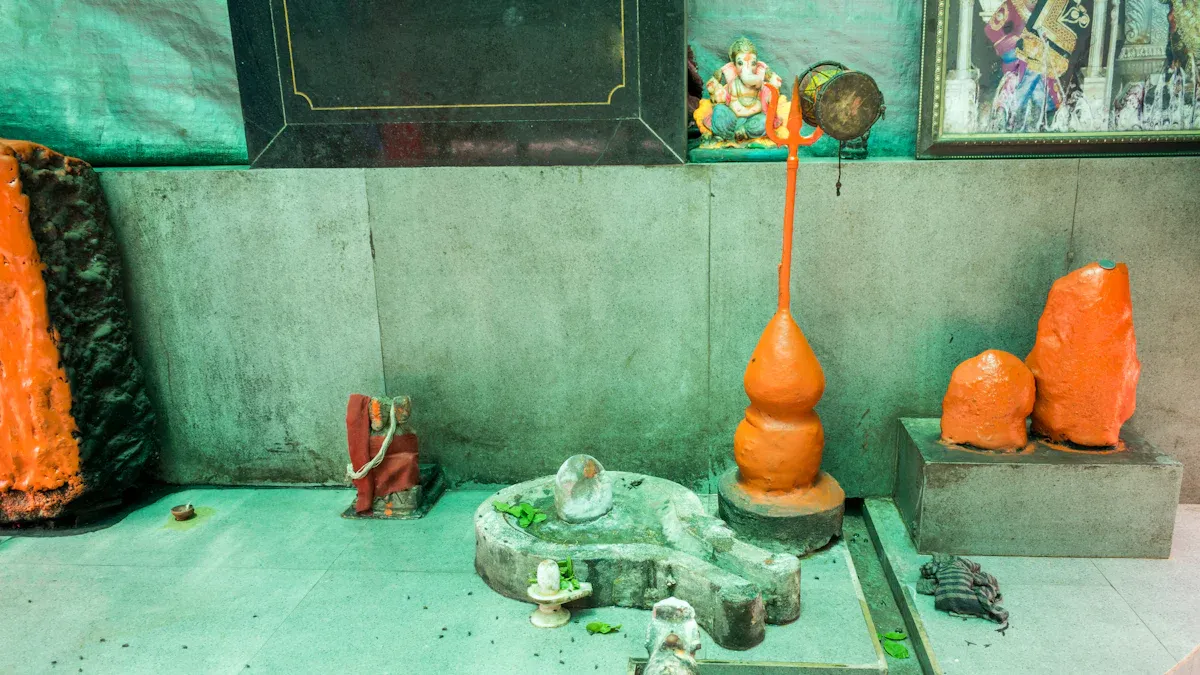
Meditation
Buddhism cares a lot about meditation. People who follow buddhism often sit still and focus on their breath or thoughts. This helps them practice mindfulness and notice the present moment. Many studies show that meditation in buddhism can change the brain. For example, brain scans show that meditation helps people stay alert and focused. People who meditate a lot feel more energy and less tired. One study found that Buddhist monks could ignore loud sounds better than others. This strong focus helps them avoid distractions and feel calm. Mindfulness is very important in buddhism. It teaches people to notice their feelings without judging them.
Taoism also likes meditation, but it feels different. Taoist meditation is more relaxed and natural. People let their thoughts move like water in a stream. They do not force their minds to be quiet. Instead, they let their minds settle by themselves. This gentle way fits the Taoist idea of living with nature.
Rituals
Rituals are important in both traditions. In buddhism, rituals can be chanting, lighting incense, or bowing. These actions help people remember the teachings and show respect. Rituals also help people focus on what they are doing.
Taoism has its own special rituals. Some Taoist rituals are for health, long life, or spiritual power. People might practice internal alchemy, use symbols, or follow old Chinese traditions. Taoist rituals often come from ancient shamans and magicians. These practices help people feel close to the Tao and the world.
Daily Conduct
Buddhism asks people to have a set daily routine. Followers often plan times for meditation, study, and being kind. They use the Eightfold Path to guide them. Mindfulness is part of daily things, like eating or walking. This routine helps people grow and suffer less.
Taoism suggests a different way. People who follow taoism try to live simply and naturally. They do not make strict plans and let each day happen. They pay attention to their feelings and what is around them. They practice mindfulness in a soft way.
Tip: Try a one-week experiment. Spend one week with a buddhist routine and set times for meditation and mindfulness. The next week, try a taoist way with less planning and more focus on the present. See how each style changes your mood and stress.
Buddhism vs. Taoism: The Divine
Gods and Spirits
Buddhism and Taoism both talk about gods and spirits, but they see them differently. In Buddhism, there are many gods and spirits. Early Buddhism had Indian gods like devas, asuras, and yakshas. When Buddhism spread, it added local gods from new places. For example, in Japan, it included kami. In Myanmar, it included nats. Mahayana Buddhism teaches about bodhisattvas like Guanyin and Manjushri. Some people think real people can be bodhisattvas too. Buddhists use gods and spirits in rituals and meditation. The religion changes by mixing with local beliefs.
Taoism has its own ideas about gods and spirits. Taoist religion says gods live in the sky and inside people. Old Taoist books say each organ has a god, like a tiny palace. These gods help with meditation and health. Taoism also has many heavens, each with its own gods. Some Taoist priests work with these gods in rituals. Taoism sometimes tries to stay pure, but it often adds popular gods. This helps Taoism stay close to the people. Taoist religion is very open and can change easily.
Afterlife
Buddhism and Taoism both talk about what happens after death. In Buddhism, reincarnation is very important. Buddhists believe people are born again after they die. This cycle keeps going until someone reaches enlightenment. When a person is enlightened, they stop being reborn and find peace. Buddhism says what you do in this life affects your next life. Good actions bring better rebirths. Bad actions bring more suffering.
Taoism talks about the afterlife in a different way. Some Taoists believe in reincarnation, but others want to become immortal spirits. Taoism teaches that people can become spirits who live in the heavens. Some Taoists hope to join the gods after they die. Others want a peaceful return to nature. Taoism often mixes with local ideas about ghosts and ancestors. Both religions give people hope about life after death. They help people think about their place in the world and what spirituality means.
Similarities and Differences
Shared Values
Buddhism and Taoism both help people live better lives. They teach people to follow the natural order of the universe. In Taoism, this is called the Tao. In Buddhism, it is called dharma. Both groups think living in harmony brings happiness and wisdom.
Some main shared values are:
Mindfulness and meditation: Both Buddhism and Taoism want people to practice mindfulness and meditation. These help people calm their minds and notice the present moment.
Inner balance and harmony: Each tradition says finding balance inside is important. When people feel balanced, they can handle problems better.
Simplicity and living close to nature: Both Buddhism and Taoism say people should live simply and stay close to nature. This helps people avoid stress and find peace.
Non-action and acceptance: Taoism’s Wu Wei, or effortless action, is like Buddhism’s focus on mindfulness and letting go of things you cannot control.
Personal growth: Both traditions see personal growth as a journey. They want people to learn about themselves and become kinder and wiser.
Today, many people use ideas from both traditions. They use Taoist ideas like Wu Wei and living gently. They also use Buddhist ideas like mindfulness and letting go. Mixing these ideas helps people grow and feel more peaceful in daily life.
Note: Many people today use both Buddhism and Taoism to help them live in the present, show kindness, and feel connected to the world.
Key Contrasts
Buddhism and Taoism have many things in common, but they are also different. Taoism focuses on living in harmony with nature and accepting change. Taoists believe people should go with the flow and not force things. They value peace, tolerance, and gentle action.
Buddhism teaches people to work toward enlightenment. Buddhists think suffering comes from wanting things and holding on to the idea of a separate self. They practice meditation and mindfulness to understand suffering and let go of attachments. Buddhism teaches about karma, or cause and effect, and that everything is connected and always changing.
In daily life, Taoism tells people to accept things as they are and find harmony with the world. Buddhism asks people to look inside, understand their minds, and work to end suffering. This is the main difference between Buddhism and Taoism.
People who study both traditions see these similarities and differences. Some pick one path, while others blend both for a balanced life. Using acceptance from Taoism and insight from Buddhism gives people many ways to grow and find peace.
Buddhism and Taoism both help people find peace and grow. Each one has its own way to do this. Buddhism gives people clear steps to follow. Taoism tells people to accept things and live naturally. Some famous Western thinkers liked these ideas. This shows that the ideas are still important today. You can think about which way feels best for you. You can also try using both ways together. Try one week with Buddhist rules. Then try one week with Taoist ways. This can help you see what makes you feel calm and balanced each day.
FAQ
What is the main difference between Buddhism and Taoism?
Buddhism shows people steps to follow for a better life. Taoism tells people to live in balance with nature. Both help people feel peaceful, but they do it differently.
Can someone practice both Buddhism and Taoism?
Yes, lots of people use ideas from both. They might meditate like Buddhists and live simply like Taoists. Mixing these ways helps people enjoy asian spirituality.
Do Buddhism and Taoism believe in gods?
Buddhism has many gods and spirits, but they are not the main part. Taoism has gods that are part of nature and the body. Both traditions honor spiritual beings.
How do these traditions help with stress?
Buddhism uses meditation and mindfulness to help calm thoughts. Taoism teaches people to accept things and go with the flow. Both ways help people feel less stressed.
Is asian spirituality only for people in Asia?
No, people everywhere can learn from asian spirituality. Anyone can use these ideas to find peace and balance in their life.
